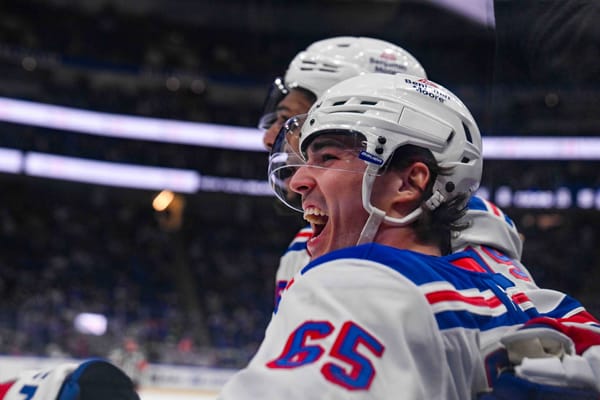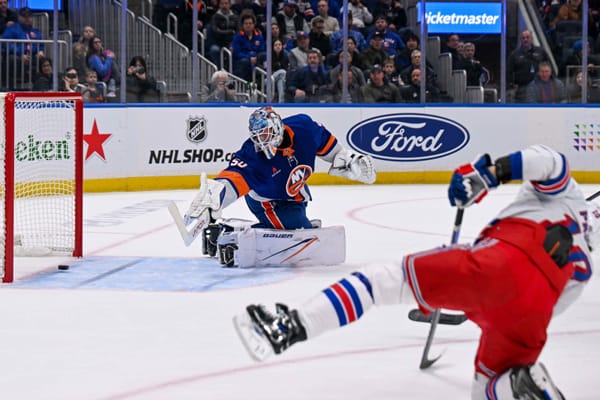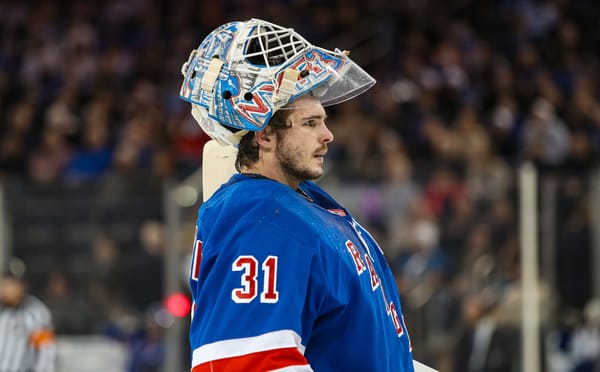Signing Stamkos Isn’t A Mistake; Thinking He Fixes Everything Is
As the NHL Entry Draft inches closer, the New York Rangers are expected to be one of the busier teams. Not only are they rumored to have a directive to get younger, they also have a desire to re-stock their prospect pool.
That makes this week scary. Or exciting. But with the Rangers’ past track record, mostly scary. Especially since, you know, the Rangers just solidified one of the worst thought out and executed player acquisitions in recent memory.
With rumors the Rangers are entertaining conversations on everyone, it’s fair to say Jeff Gorton is going to be one of the busier General Managers out there this week.
The Rangers actions this week and during the draft are going to have a ripple effect for the rest of the summer. With rumors surfacing that the Rangers might be heavily pursuing Steven Stamkos, it’s fair to say Gorton might be making some moves with that possibility in mind.
As the possibility of Stamkos has found its way to the light, various media members and bloggers have commented on the situation from a Rangers perspective. More often than not, these articles and opinions are negative.
I can’t say that I agree.
Stamkos is going to be 27 years old in February, meaning that even on a max contract he wouldn’t turn 35 until midway through the final year of his extension. The dollars are an issue that need to be discussed (we’ll get on to that later) but from a length/player value standpoint it’s a contract that makes a lot of sense. Stamkos has at least four more years of true prime left in him and then at least two more years of the “he’s ageing but is still an elite player.” At the worst you have to swallow the last two years of the deal, but I’d be surprised if a long-term deal with Stamkos didn’t work out well for both sides.
From a production standpoint a lot of people like to point to Stamkos’ year this year as him turning a corner for the worst. This disregards that Stamkos A) had blood clot issues that had to impact his play before they kept him out for months on end, and B) Stamkos still had 36 goals and 64 points in 77 games.
This year and last year were the first two seasons Stamkos has been below a point-per-game since his rookie year. Even so, in the 159 regular season games he notched 136 points and, more importantly for the Rangers’ interest, 79 goals.
If the Rangers are removing Nash in a deal for either futures or defense, this is a great place to go for a replacement from a production standpoint. Before you complain about the playoffs, Stamkos has 35 points (15 goals) in 49 playoff games, so hush.
Stamkos would be a significant (I cannot stress how significant) improvement for the power play. As much as Nash is an elite goal scorer, Nash needs to work in close for his goals since he doesn’t have the best shot. Stamkos is the exact opposite, capable of ripping shots from anywhere on the ice (can’t you see him teeing up like Alexander Ovechkin) and opening up space elsewhere.
Per Corsica Hockey, over the past three years Stamkos has recorded a 4.27 P/60 on the man advantage. Stepan has had a 3.76 P/60 and Nash has had a 2.09 P/60 over the same span. If you flip it to just goals, Stamkos’ 2.6 G/60 on the man advantage is more than the total of Stepan’s (1.18) and Nash’s (1.23) combined.
From an even strength perspective his shot helps as well. When Nash is the only guy going on his line, other teams can easily swallow him up because Nash needs to get in close to do most of his damage. And since Mats Zuccarello and Derick Brassard weren’t always shooting, it made it hard to create offense. Stamkos can’t really be contained like that, because he doesn’t need the puck as much and can float into space where any of the Rangers pass-first forwards can get him the puck. Even though he hasn’t signed yet I can envision Zuccarello and Stamkos giving other teams nightmares as Zuccarello floats passes to an open Stamkos who rips them home. It’s beautiful.
The risk, of course, is the money. Stamkos can most likely command 10+ million on the open market, although I’m not totally sure he can get that from contending teams after his blood clot issue this year. A team might have a hard time insuring his contract with his injury history there, and that means there’s an enormous amount of financial risk on any team making a move for him.
That means a lot of teams might be backing out of the sweepstakes simply because they can’t afford to pay him in the event something goes wrong. (If you need more on this, see Columbus willingly trading Nathan Horton to Toronto for David Clarkson simply because the Blue Jackets couldn’t afford to pay a player who wasn’t playing.)
That also means Stamkos might not be coming away with one of those Jonathan Toews $10-million dollar deals from places he wants to go. Granted Toronto — who is rumored to be the likeliest landing spot for Stamkos — is a big-money team who wouldn’t be afraid to take a financial risk (just like the Rangers are) so it’s possible they don’t play games with him and they go there, but it’s more than likely the blood clot pushes his salary down.
The salary cap risk for the Rangers is a much bigger issue for Gorton. If the Rangers wanted to make a move for Stamkos (and for the purpose of this article let’s assume he signs a $9-million deal) they’re going to need to clear out a lot of cap space. That means buying out Dan Girardi or trading Marc Staal with little to no salary retention. Maybe both. It would also mean removing Rick Nash for little to no salary retention (which is far more likely). It might also require a Derek Stepan trade.
There would be a lot of moving parts to make something like this happen. Let’s speculate for a moment.
- The Rangers get a defenseman and a two-way forward for Nash that saves the team almost no salary.
- Then assume they buy out Girardi to make some space.
- Then Gorton trades Derek Stepan for some cheap, young defensive help and a 1st round draft pick.
- Sign Stamkos in free agency
The Rangers would be younger on the blue line, infuse some youth into their bottom six, replace Nash’s goal scoring with Stamkos and get better on defense. Obviously who comes back in the fictional Nash/Stepan trades are a big deal (you’d have to replace Stepan’s defense, I’m not worried about replacing Girardi’s) but you’d both upgrade the team and get younger.
Depending on the defensive returns, too, the Rangers might re-vamp their system by getting players who can actually move the puck out of their own zone. Imagine having four or five options at the back who can do that rather than two.
There’s definitely reasons to be worried about bringing Stamkos in, mainly from a cap hit/risk of his blood clot injury perspective. The real risk actually doesn’t come from Stamkos himself but of the idea of Stamkos.
As you can see above, in my fictional trades to make room for Stamkos I tried to fix the defense/depth issues the Rangers have and will have if they remove both Nash and Stepan. More would have to be done on the defensive side for forwards — although maybe sitting Tanner Glass and giving Jesper Fast/Oscar Lindberg/smart depth free agent signing as a real fourth line would help — but it’s a good start.
Where Stamkos is a problem is the impression that he fixes all the Rangers problems on his own. The Rangers need help on defense, first and foremost, and if it costs a guy like Nash or Stepan to pry some good, young defenders away then so be it. Just bringing in Stamkos and churning out the same run-down defense would be about as big of a disaster as there could be.
If the Rangers do get Stamkos then hopefully this week paves the way for that being a smart thing.
Because as good as he is, he can’t fix the Rangers’ biggest problems.





